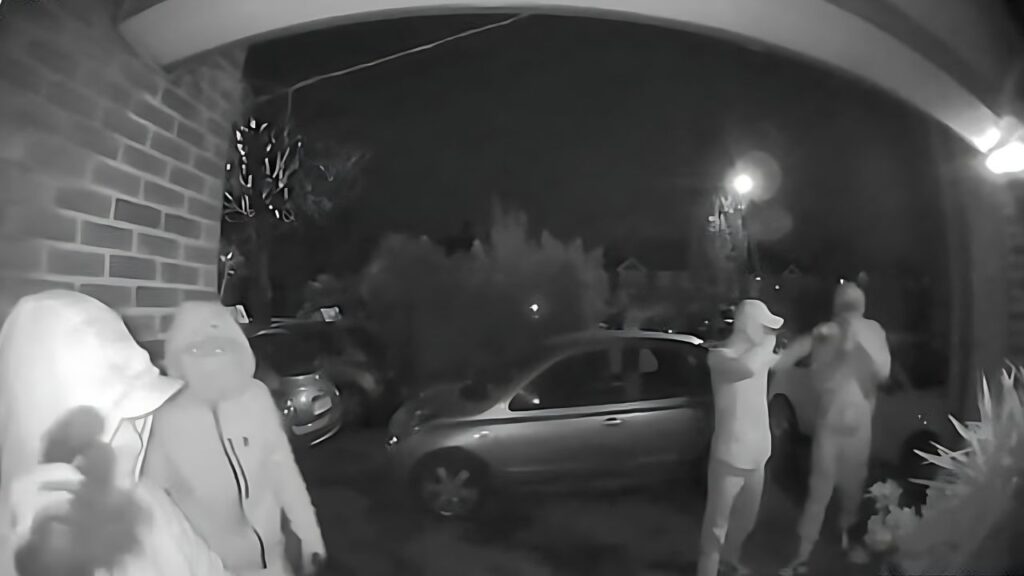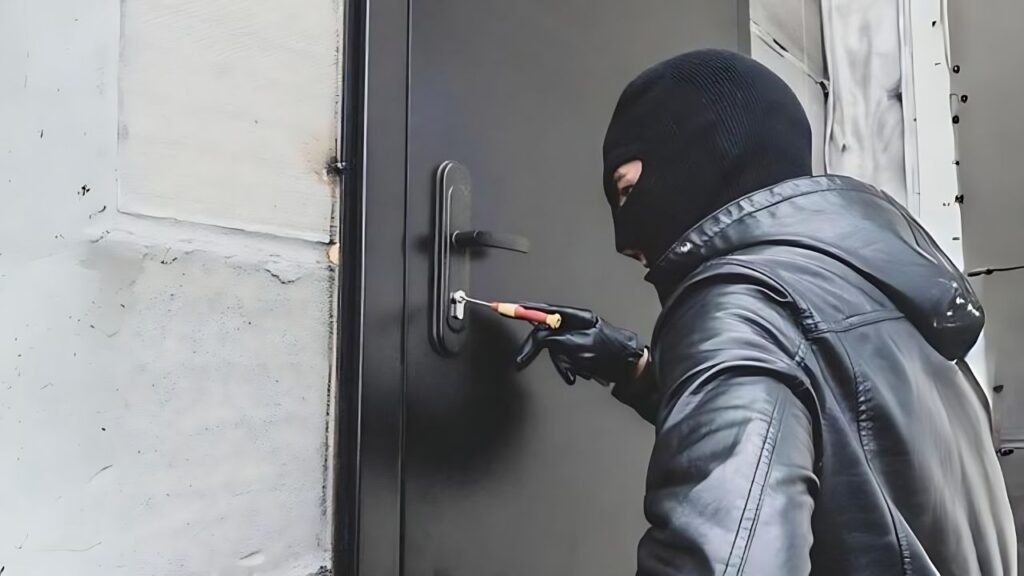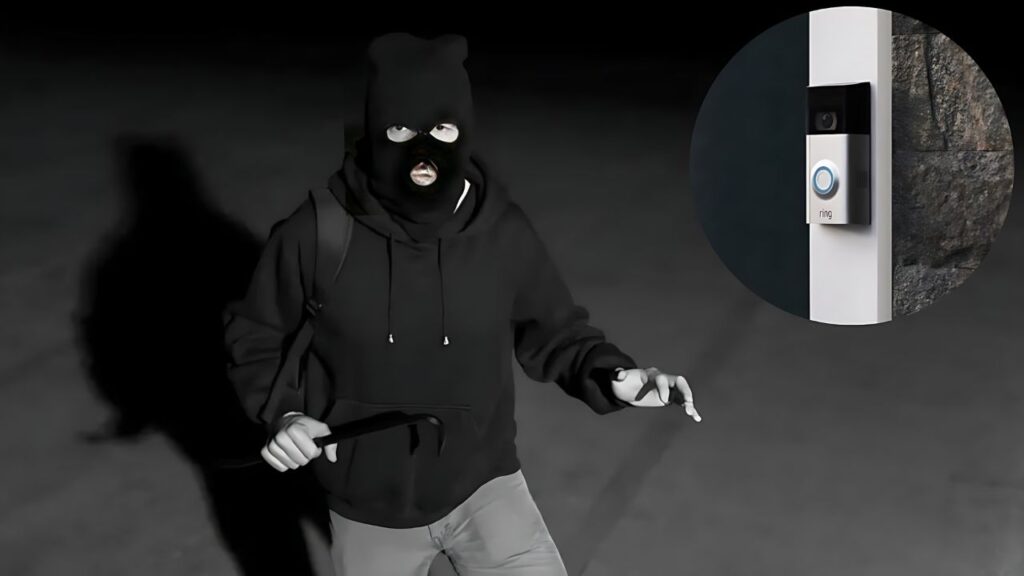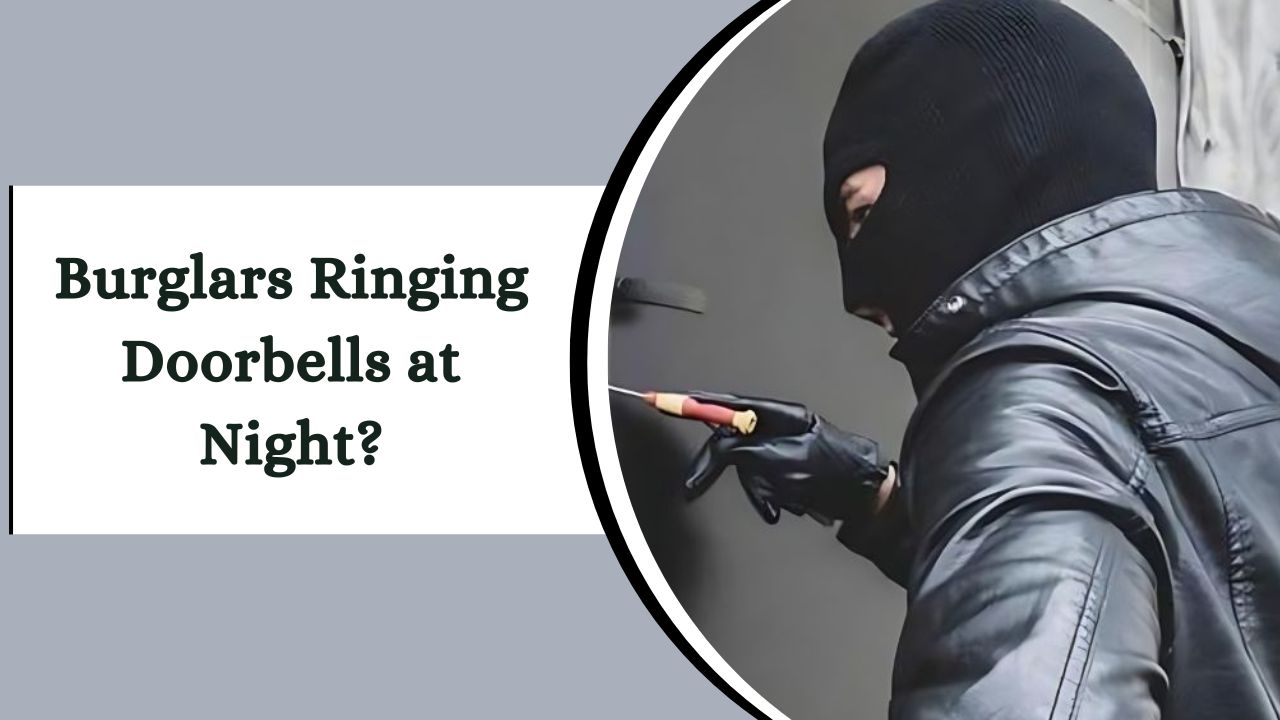Burglars often use doorbell ringing as a tactic to check if a home is occupied. This article explores whether this method is effective, how burglars employ it, and what homeowners can do to enhance their security and deter potential intruders.
The Psychology Of A Burglar

Picture this scenario: It’s late at night, and suddenly, the doorbell rings. Is it a harmless prank or something more sinister? Linda, a seasoned criminologist, sheds light on this strategic manoeuvre. Burglars often employ tactics of cunning and surprise, using doorbells to assess whether a home is occupied.
This calculated approach is opportunistic, targeting homes perceived as easy marks where no answer to the doorbell signals potential absence. Such insights offer a glimpse into the mindset of burglars, supported by empirical studies and statistical data.
Tactics Employed by Burglars
In the shadowy realm of burglary, ringing doorbells at night represents just the surface of their repertoire. John, a former burglar turned security consultant, provides invaluable insights.
Beyond doorbell tactics, burglars are adept at masquerading as salespeople or faking delivery attempts, skillfully probing without triggering alarms. This section draws on real-life case studies and examines how these tactics vary by time of day.
Do Burglars Ring Doorbells At Night?

Exploring whether burglars ring doorbells at night reveals a nuanced strategy. Insights from law enforcement professionals, such as Officer Daniels, underscore a common modus operandi: nighttime doorbell rings exploit slower or absent homeowner responses.
This method allows burglars to assess potential targets with minimal risk quickly. In some communities, residents are less inclined to answer late-night doorbells, especially when they suspect the homeowner is away.
This tactic thrives on surprise and the natural reluctance of individuals to engage late at night, making it a preferred method for scouting vulnerable properties.
The Role of Neighborhood Dynamics and Technology
Moreover, security experts emphasize the impact of neighborhood dynamics and technological advancements in home security. Helen Clark, a security consultant, highlights that close-knit communities can swiftly respond to unexpected visitors, deterring burglars.
However, the rise of smart technologies, like surveillance cameras, has revolutionized home security. These devices enable discreet visitor verification without direct engagement, reducing the efficacy of traditional doorbell tactics.
Understanding these intricacies is pivotal for homeowners, emphasizing the need for vigilance and community awareness to thwart potential burglaries.
How To Respond To Your Doorbell?

When responding to your doorbell, always prioritize your safety by staying vigilant. If you are home alone, act as though others are present and confirm the visitor’s identity from behind a closed door.
Utilize a camera for visual verification and be cautious of any suspicious actions or questionable service proposals; consider reporting any such concerns if necessary. Be wary of door-to-door salespeople and follow your instincts, contacting law enforcement if you feel uncomfortable.
To protect your valuables, keep them out of sight, secure them in a locked safe, and store important documents in a fireproof container.
Personal Stories from Homeowners
Emma Thompson’s Incident:
Personal stories often shed light on real issues, as illustrated by Emma, a homeowner who shares her unsettling experience. One evening, her doorbell rang incessantly, creating an atmosphere of unease.
Emma chose to remain indoors and contacted the authorities. It turned out that the persistent ringing was an attempt to determine if her home was vacant. Her experience underscores how homeowners have dealt with and responded to such tactics.
Tom Anderson’s Encounter:
Tom, residing in a suburban area, recounts a similar occurrence. Around 1 AM, his doorbell rang. Although he initially considered it might be an emergency, something felt off, according to Tom.
Opting for caution, he checked through the window before opening the door and observed a figure swiftly moving away from his property. The following day, Tom discovered that several homes in his neighbourhood had been burglarized that night. His intuition and cautious approach likely helped protect his home from a potential break-in.
What If I See Suspicious People At My Door?

Leverage Smart Doorbell Functions:
When an unexpected visitor appears at your door, make use of your smart doorbell’s communication feature. Inquire about their purpose; often, burglars will flee when confronted.
If they respond with irrelevant questions or claim to be offering a service, their intentions may be dubious. This interaction can help assess their intentions and provide useful footage for future reference.
If you see someone trying to tamper with your door, it’s important to act decisively. Loudly inform them through a window that you’ve contacted the police and they are on their way.
Afterward, immediately call the police to report the incident. If the person leaves, file a report using any available information or video evidence, as it could be relevant to other similar incidents.
Safety Measures if the Intruder Stays:
If a suspicious individual does not leave, prioritize your safety by finding a secure, concealed location within your home. While in hiding, stay on the line with emergency services, such as 911, and provide updates.
Remain hidden until you receive confirmation from the authorities that it is safe to emerge.
Technological Innovations in Home Security
Understanding the latest advancements in home security technology is crucial for improving safety. Innovations in this field have brought significant enhancements, adding new layers of protection against potential intruders.
Modern smart doorbells have transformed home security by offering real-time video streaming and two-way communication. Homeowners can view and interact with visitors from anywhere through their smartphones.
These devices can send instant notifications and video recordings when motion is detected, allowing for verification of visitors without opening the door. This feature greatly enhances both safety and convenience.
Enhanced Motion Sensors:
Recent developments in motion sensor technology have significantly improved their accuracy and reduced false alarms, which were common with older models.
Contemporary sensors utilize advanced algorithms to distinguish between different types of movement, such as differentiating a person from a pet. This enhancement minimizes unnecessary alerts and boosts the overall reliability of home security systems.
Today’s surveillance cameras come equipped with artificial intelligence (AI), enabling features like facial recognition and the detection of unusual activities.
These cameras can differentiate between people, animals, and vehicles, providing a higher level of analytical capability. This reduces the incidence of false alarms and ensures that alerts are generated only for significant security threats.
Biometric Security Systems:
Biometric technology, such as fingerprint and facial recognition systems, is increasingly being integrated into home security setups. These systems offer a high level of security by ensuring that only authorized individuals can access the property.
They eliminate the need for physical keys or codes that could be lost or forgotten, thereby enhancing both convenience and security.
Do Smart Doorbells Deter Burglars?

Smart doorbells can potentially discourage criminals who wish to avoid being recorded on video. Burglars who notice a camera are likely to steer clear of properties with visible surveillance.
These devices provide benefits whether or not the intruder rings the bell. Many smart doorbells come with motion sensors that notify homeowners of any movement near their front door.
Additionally, some models feature high-quality two-way communication and live video feeds, allowing homeowners to monitor their doorstep from anywhere via their smartphone.
More Things People Look For:
Can a Ring Doorbell Attract Burglars?
The presence of a Ring doorbell might raise concerns about whether it attracts or deters burglars. According to Professor Claire Nee, founder of the University of Portsmouth International Centre for Research in Forensic Psychology, while these devices can deter some intruders, an alarm-equipped doorbell like Ring might signal to thieves that there could be valuable items inside the house.
Why Does My Doorbell Ring Randomly at Night?
Unexpected doorbell ringing at odd hours is not always an indication of an intruder. Often, it is caused by fluctuations in the doorbell’s voltage. While minor power spikes typically won’t trigger the chime, larger spikes can result in random ringing.
What Should I Do if a Stranger Rings My Doorbell at Night?
If a stranger rings your doorbell during the night, it’s safest not to open the door. Instead, communicate through the door or use a doorbell camera to assess the situation from a safe distance.
What Are Other Signs of a Potential Burglary Attempt at Night?
Besides random doorbell ringing, other signs that might indicate a burglary attempt include suspicious vehicles parked nearby, individuals loitering or behaving unusually in the neighbourhood, and unusual noises.
How Can I Make My Home Less Attractive to Burglars at Night?
To reduce your home’s appeal to burglars during the night, ensure your property is well-lit, install security systems, and use secure locks. Creating the appearance that someone is home, even when you’re not, can significantly deter potential intruders.
Our Final Take
Burglars may ring doorbells at night to check if a home is occupied.
Using smart doorbells and other security technologies can effectively deter such tactics, making vigilance and modern security measures essential for protecting your home.

